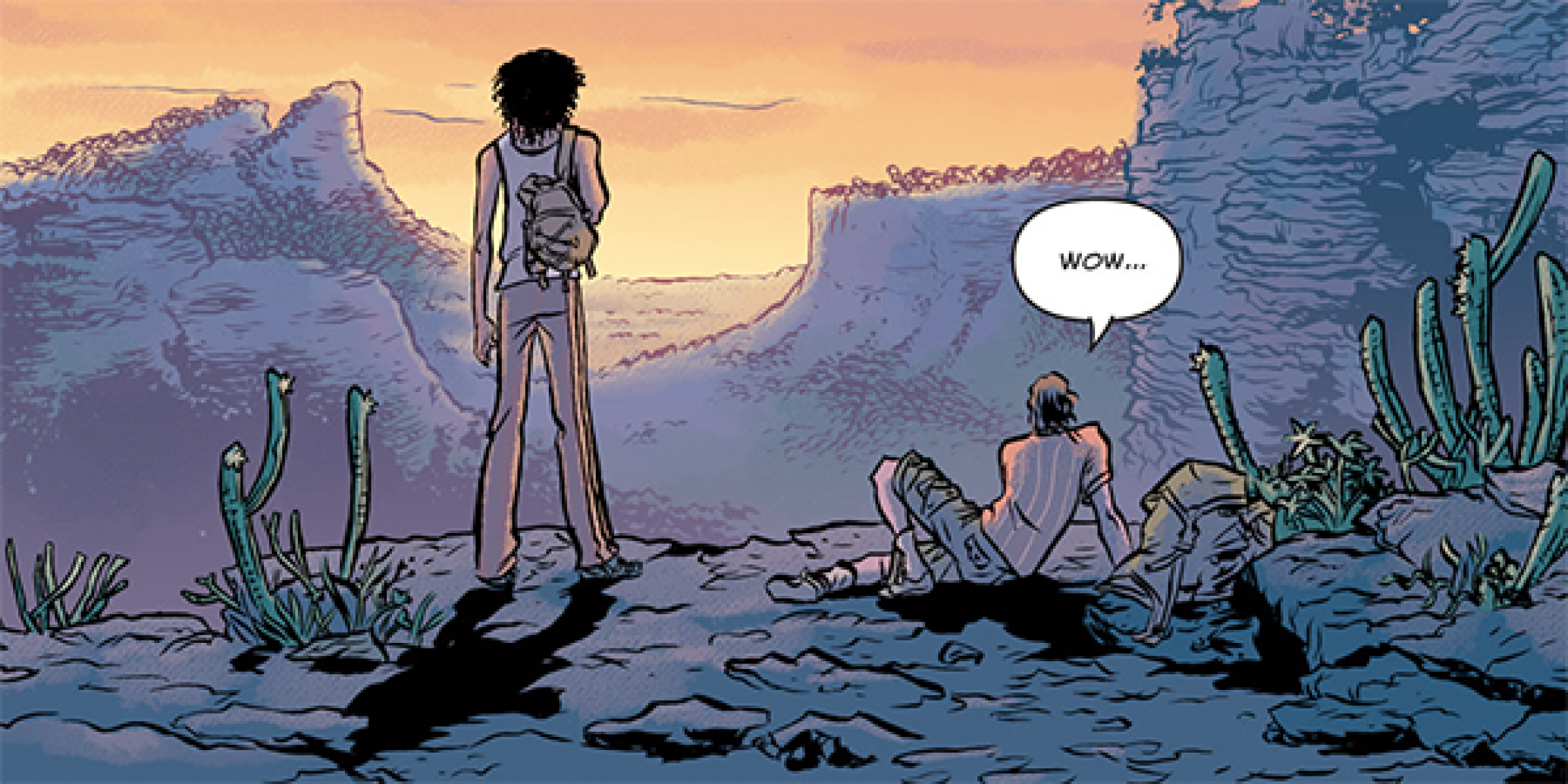Welcome to The Secret Language of Comics
Welcome to ENG101 (section 11), The Secret Language of Comics: Visual Thinking and Writing.
I look forward to working with you this semester.
Your homework to complete before we meet again on Tuesday, September 3:
- Read over this website very carefully as it constitutes the syllabus for this course. Note that the Syllabus page includes a number of subpages, covering such topics as: how to contact me; the course learning outcomes; the texts you need to buy; attendance, participation, and other policies; and how you will be graded. There is also a calendar of readings and assignments; and posts describing the three major assignments (literacy narrative in three parts, tracing pages, and halfa kucha) and minor assignments this semester.
- Add this site to your bookmarks. Make certain that you can find your way back here, because you’ll be spending a lot of time visiting these pages over the course of this semester.
- Sign up for a basic, free WordPress site. (See further information below about choosing a name for your site.) Note: If you already own a domain and server space, come talk to me to determine whether you can use that instead of creating a site on WordPress.com.
- Leave a comment on this post asking a question about the syllabus. Put the URL for the WordPress site you created in the “website” line on the comment form. If you want to receive an email every time a new post goes up on this site, check the “Subscribe to site” box before you submit your comment.
- Reply to this survey form, which both asks some basic information I’ll need in order to manage communications with you and also asks some questions that will help me get to know you a little bit better.
- Read the following two texts: Andrea Lunsford, “Rhetorical Situations” and “Reading Rhetorically” from Everyone’s an Author and Allie Brosh, “Adventures in Depression, Part One” from Hyperbole and a Half. (Note that first link will take you to the PDF that I’ve uploaded to our electronic course reserves, so you will need to login with your Emory netid and password to access the document. The second link goes to Hyperbole and a Half on blogger. Allie Brosh has since published the story in her book, Hyperbole and a Half, which is excellent, but we can use this version on the web for this course.)
A little more on naming your WordPress site
You can choose a URL based on some version of your name (i.e., janestudent.wordpress.com or johndoe.wordpress.com) if you’d like. Using a version of your name has the advantage that you will be building a digital identity on the web based on your name, which can be really helpful. On the other hand, it also means that this site that you’re building will likely come up near the top of web searches for your name, so consider whether that is something you would like.
If you don’t want to publish your coursework on a site with a version of your name, you can also use some sort of pseudonym for your domain name.
It is also perfectly acceptable for your domain name to be a short word or phrase that is easy to remember and spell, and which speaks to some interest of yours or an aspect of your character (for example: my friend Audrey Watters, a noted educational technology scholar and researcher publishes a site called hackeducation.com; Tanine Allison, a professor of Media Studies here at Emory who just published her first book entitled Destructive Sublime: World War II in American Media, uses destructivesublime.com as her domain name; or one of my favorite art and design blogs is called thisiscolossal.com). If you’re going to choose a title or phrase as your domain name, make sure you think about it very carefully so you don’t show up on one of those lists of the most unfortunate domain names ever, like the design firm called Speed of Art that ended up with a domain name that sounds like it’s about flatulence in a swimsuit. Note that in the case of your site, you’ll be publishing a page that’s a subdomain of WordPress.com, so if Audrey Watters were in this class her site might be called hackeducation.wordpress.com.

















